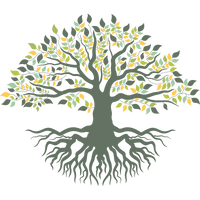
The journey of the soul after death is a deeply spiritual and complex process, varying across cultures and religions.
In many traditions, it is believed that the soul lingers on Earth for a period of time, often 40 days, before transitioning to the afterlife.
During this time, the 40 days after death, the soul is thought to undergo a series of trials and challenges, including encounters with evil spirits and the toll houses, where it is judged for its actions during earthly life.
The Tibetan Book of the Dead is a sacred guide created over a thousand years ago, it is a unique religious and philosophical guide for the dying and the dead, explaining the after-death experiences in the Bardo states and offering a path to liberation from the cycle of rebirth.
Are you ready to face the ultimate truth?
Two Questions About The Thought of Death
Two questions about the thought of death remains as elusive as ever:
The first is: ‘ How may one avoid death?
The second is: ‘What happens after we die?’
The avoidance of death is the aim when Hathayoga is used to prolong present life in the flesh.
The Tibetan book of the dead, however, tells noble souls that death comes to everyone.
It reminds people not to hold on tightly to life on earth, which is full of endless cycles of birth and death. Instead, you should seek help from the Divinity to safely navigate the challenging state after your body dies.
The second question is the question the book ‘The Tibetan Book of the Dead’ are concerned, because the technique of dying in this book turns death into a gateway to better future lives.
It makes a revolutionary claim: our consciousness doesn’t stop when our bodies die. Instead, it continues on a journey through unseen realms, with each stage offering opportunities for freedom or rebirth.
What’s even more intriguing is that these ancient ideas align with modern near-death experiences of the people who return from clinical death often describe seeing a bright light, meeting spiritual beings, and feeling deep peace.
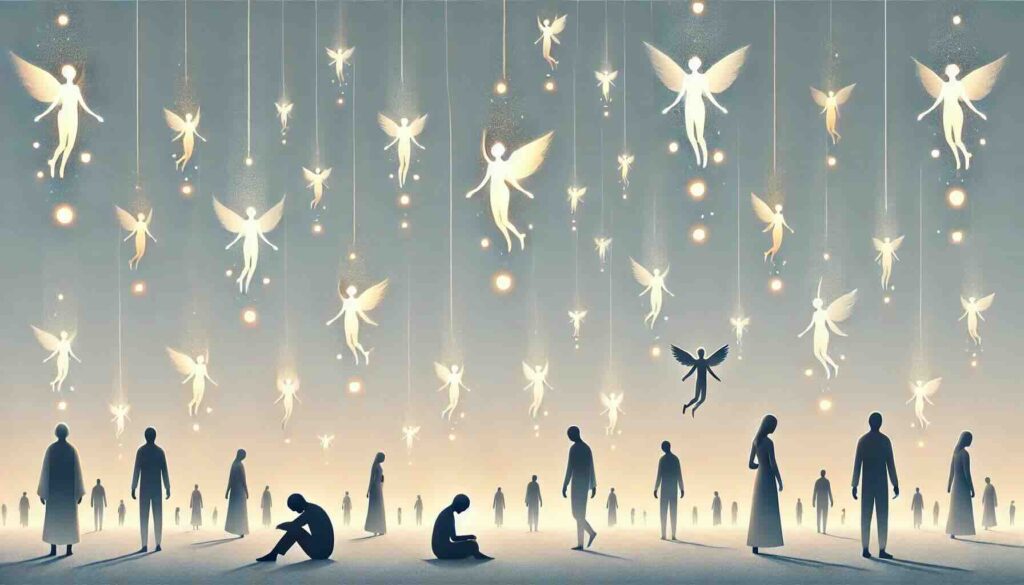
What will happen in the soul’s journey in the 40 days after death
The Tibetan Book of the Dead describes the soul’s journey through various stages after death.
The first, the Chikhai Bardo, occurs at the moment of death when the senses dissolve, and consciousness manifests as the “Clear Light.”
During the second bardo, known as the Bardo of Visions, you encounter vivid and sometimes overwhelming visions.
These are not external forces but projections of your own consciousness, reflecting your inner fears, desires, and attachments.
Recognizing these visions as mirrors of your own mind offers another chance for transformation and liberation.
Finally, in the third bardo, Sidpa Bardo, consciousness moves toward rebirth.
In this realm, karma takes tangible form, shaping the nature of the next life based on past actions, intentions, and desires.
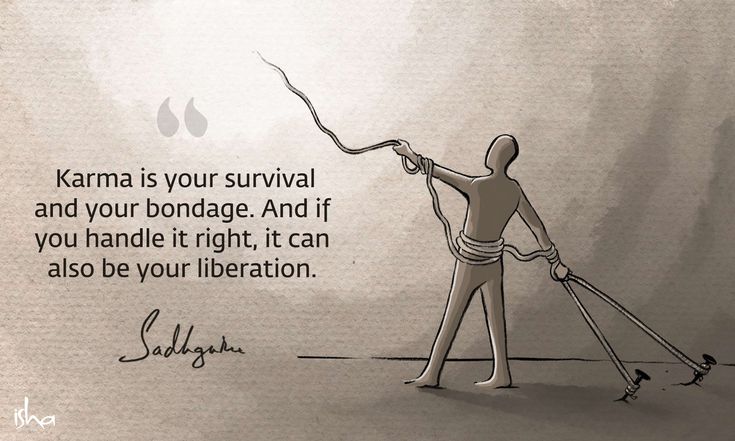
The state of three bardos in the 40 days after death
Before and immediately after death, you will not necessarily and at once lose any habit, even though it be drinking and smoking.
And they, in after death state, are as real as the substances you drank and smoked in your waking state. Just as a dream reproduces waking experiences. Common people call this state the consciousness has fainted away.
Subsequently, you realize that you are no longer alive.
At first, you still remember your previous life and believe you have the same physical body as before.
However, this body is like the one we see in dreams—it’s not real. It doesn’t show up in mirrors or cast shadows. This imagined body can do incredible things, like passing through mountains and other impossible feats.
Different cultures and religions have specific mourning practices during the 40 days after death.
The first bardo: day 1 to day 7
In Tibetan book of the dead, the first bardo, The Chikhai Bardo, is the bardo of the moment of death. It is the briefest of the bardos.
Your senses dissolve during this bardo. In this stage, your profound state of consciousness will be manifested as a Clear Light.
The time for the Clear Light is uncertain. It depends upon the constitution, good or bad, and the state of your nerves and vital-force.
For those who have experience with the calm and steady state of meditation, the penultimate stage of yoga, and for those with strong nerves, this state lasts for a long time.
Consciousness is the clear light of awareness that shines immediately after death during this Bardo. If you can recognize this Clear Light as reality, rather than external entities, you achieve immediate liberation from the cycle of rebirth.
But if you fear the primary Clear Light and you have not recognized the light, then there is dawning that is called the secondary Clear Light, which begins a little more than a mealtime after the end has passed.
The second and the third bardo: days 7 – day 40
The passage now moved to the second Bardo, the Chikhai bardo, a world of forms of colors.
There are two paths of liberation during the second Bardo and the third Bardo:
One is the Nirvanic line, comprising
- five peaceful deity, they reflect your highest most enlightened qualities,
- five wrathful deity, they embody the parts of yourself you feared or denied.
The other is the Sangsaric line, this will happen at about the fifteenth day, which is the Third Bardo, Sidpa Bardo. The third bardo consists of the Six Lokas:
- Hell Realm: The world of hell, or naraka,
- Hungry Ghost Realm: The world of hungry ghosts, or preta,
- Animal Realm: The world of animals, or tiryagyoni,
- Human Realm: The world of humans, or manushya,
- Demi-God Realm: The world of warlike demigods, or asura,
- God Realm: The world of gods, or deva.
The peaceful deity follow on the sixth and seventh day, and the wrathful deity on the eighth and subsequent days.
They aren’t just random pictures. They reflect your inner state.
If you’ve developed kindness, self-awareness, and wisdom, the visions will be bright and welcoming, guiding you toward a life full of opportunities. But if fear, anger, or attachment rule your mind, the visions will appear darker and more chaotic.
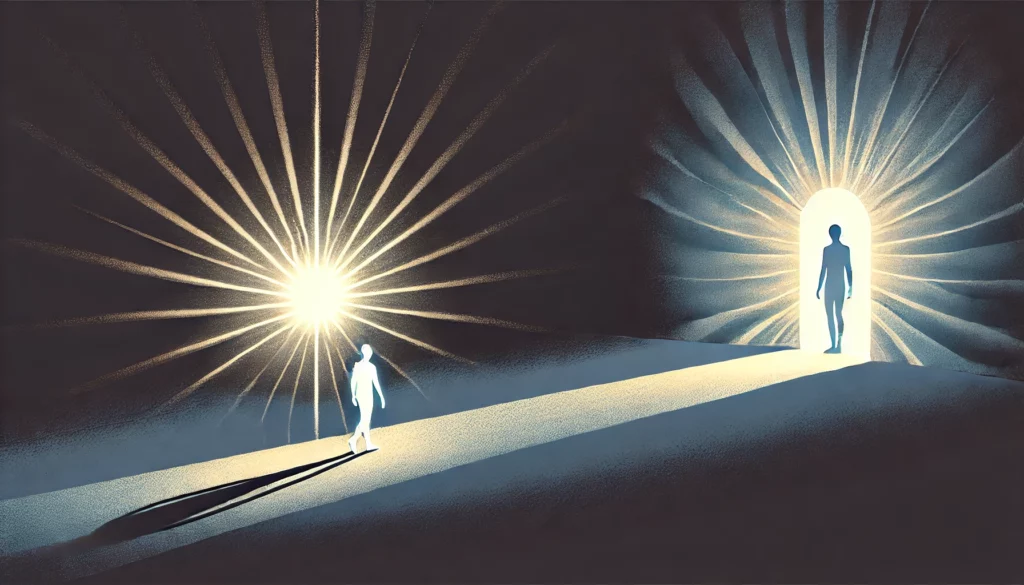
In the third Bardo, you now are in the Sangsaric line, in which rebirth is destined. But which loka you will go to is determined by your previous Karma.
Virtuous deeds create experiences of pleasure and non-virtuous deeds create experiences of pain.
These deeds not only determine the quality of a given life but also determine the place of rebirth after death. Depending on the severity of one’s actions, one might be reborn as a god, demigod, human, animal, ghost, or hell being.
Now, in the third Bardo, your past life has become dim.
If your Karma leads you to Hell, you go there after Judgment, in a subtle body that cannot be hurt or destroyed but can still experience intense suffering. Alternatively, you may go to a Heaven-like world or another realm.
But no matter which loka you go to, you will eventually return to Earth, because neither punishment nor reward lasts forever.
This return happens after you have either paid for your sins in Hell or enjoyed the rewards in Heaven that your Karma earned them.
If your Karma leads you to an immediate rebirth on Earth, you may see visions of men and women coming together before being reborn.
Now, at this final stage towards the awakening to earth-life, you start to realize that you lost your body of flesh and blood, so you urgently desire to have one so that you may again enjoy physical life on the earthworld.
The second and third Bardo isn’t a test of faith or a Punishment; each possible new life pulls at you, shaped by the invisible threads of karma, drawing you toward the life that matches your inner state.
This isn’t a test from an outside force—it’s a mirror of your own mind, showing the results of your actions, intentions, and desires.
It’s an invitation to see the raw truth of your own mind, they reflect your kind and evil Karma in the nirvana line, no matter it’s peaceful deity or wrathful deity, they give you the chance to change and transform what would happen if you began to see every fear every aspiration in life.
Reincarnation and rebirth
Remember, don’t be terrified and flee away from these deities, Liberation can be achieved if you recognise these deities as manifestations of your own consciousness rather than external entities.
Otherwise, you, if not previously liberated, seeks ‘ Rebirth’, the Sangsaric line, and has to go through the cycle of rebirth again.
By now, If you have not yet liberated in the second and the third bardo, you pass out of the Bardo dreamworld into a womb of flesh and blood, issuing once more into the waking state of earth experience.
This is what is called reincarnation, or rebirth in the Flesh.
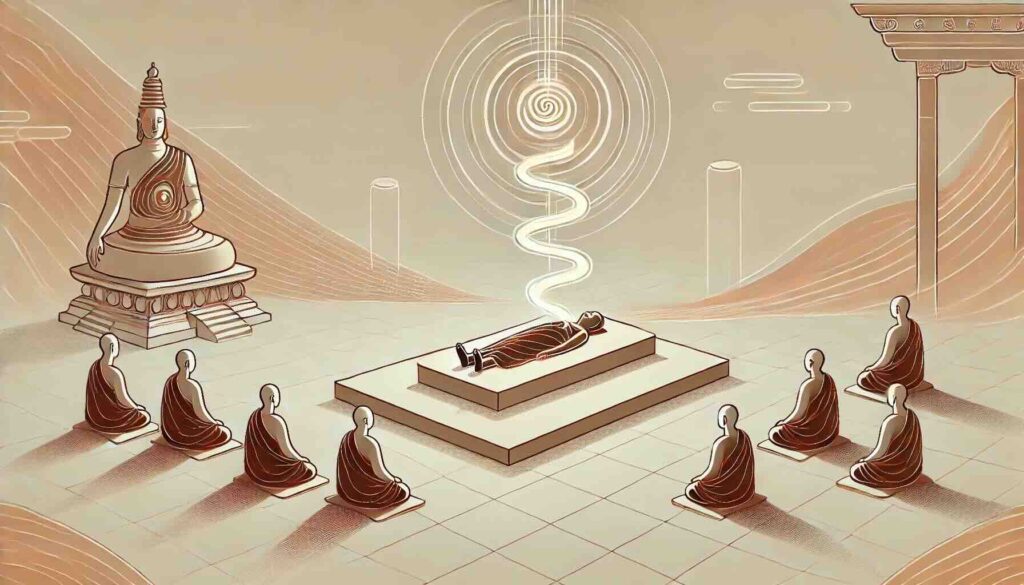
The Role of Family Members in the Grieving Process
Family members play a crucial role in the grieving process. They are often the primary caregivers and supporters of the deceased during their final days, and may be responsible for making funeral arrangements and planning memorial services.
The techniques of death the Tibetan book of the dead will guide family members in helping the deceased love going through 40 days after death peacefully and smoothly.
After the death of a loved one, family members may experience a range of emotions, including shock, denial, anger, and sadness. They may also feel a sense of responsibility to care for the deceased person’s estate and make decisions about their funeral and burial.
Family members can support each other during the grieving process by being present and available to one another. They can also seek support from friends, religious leaders, and mental health professionals if needed. Attending memorial services together can provide a shared space for mourning and remembrance, strengthening familial bonds during this challenging time.
Read our other posts about our deceased loves:
Do the Dead Know We Miss and Love Them


